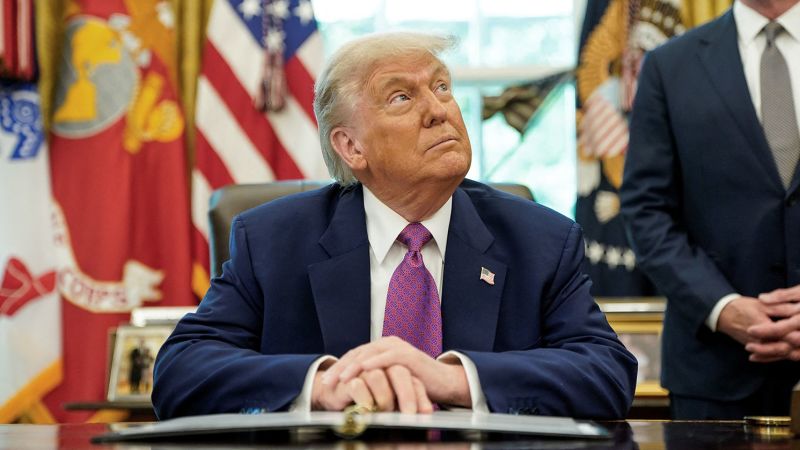On a notable Tuesday, President Donald Trump made a provocative announcement that could significantly reshape federal disaster response policies. He revealed intentions to dismantle the Federal Emergency Management Agency (FEMA) after the current hurricane season concludes later this year. This declaration marks a pivotal moment in the Trump administration’s approach to disaster relief, as the president seeks to redistribute the responsibilities traditionally held by FEMA, delegating them instead to state governments.
In a briefing held in the Oval Office, Trump articulated his vision for a future in which FEMA is phased out in favor of state-level management of disaster response. He stated, “We want to wean off of FEMA, and we want to bring it down to the state level.” His remarks suggested a belief that state governors should be fully equipped to manage catastrophic events and recovery efforts, further asserting that if they cannot manage aftermaths, “maybe they shouldn’t be governor.” This strong sentiment reflects the administration’s broader aim to reduce federal intervention in various sectors, emphasizing local governance and responsibility.
The president’s comments were underscored by Homeland Security Secretary Kristi Noem, who has been vocally supportive of plans to eliminate FEMA, deeming the agency “fundamentally needs to go away as it exists.” Echoing this sentiment, she criticized FEMA for its past failures and emphasized the need to restructure disaster response mechanisms fundamentally. Noem conveyed the urgency of building communication frameworks and mutual aid agreements among states, particularly as the hurricane season is in full swing. The administration aims to ensure that states can effectively respond to disasters independently, with federal support only in catastrophic circumstances.
The intentions to dismantle FEMA have raised significant concerns among emergency management professionals. Notably, federal and state emergency managers are critical of the administration’s approach, arguing that state-level responses are often hamstrung by limited budgets and personnel. A seasoned FEMA leader remarked, “This is a complete misunderstanding of the role of the federal government in emergency management… It is clear from the president’s remarks that their plan is to limp through hurricane season and then dismantle the agency.” This perspective highlights an essential debate about the federal government’s capacity to aid states during overwhelming emergencies.
Compounding the challenges facing FEMA, the agency has entered the hurricane season under-prepared and understaffed. Reports indicate an alarming decline in its workforce, with projections estimating a reduction of nearly 30%, shrinking the once-mighty agency from approximately 26,000 to about 18,000 employees. In light of this situation, Secretary Noem has initiated measures to enhance readiness by reopening several FEMA training centers and extending contracts for personnel who would respond during disasters.
However, skepticism remains about the leadership within FEMA. Recently appointed David Richardson, who previously had no direct experience in disaster management, has been given the significant task of leading the agency. His appointment, along with several other new hires lacking disaster response backgrounds, raises concerns about the agency’s future capabilities under the current administration.
Furthermore, communication between the White House and FEMA appears to be deteriorating. In several instances, the president approved disaster declarations without timely notifications reaching FEMA, causing delays in financial assistance for affected communities. This breakdown raises questions about the efficiency and coordination necessary for effective disaster management.
While the administration’s long-term plans for disaster response remain ambiguous, discussions indicate a potential move to set stricter qualifications for federal aid. Trump, dismissing FEMA’s effectiveness, remarked, “The FEMA thing has not been a very successful experiment,” emphasizing the financial burden of federal disaster response systems. As the hurricane season progresses, the implications of these policy shifts will likely continue to resonate throughout the impacted communities and contextualize the ongoing conversation around government roles in crisis management.



